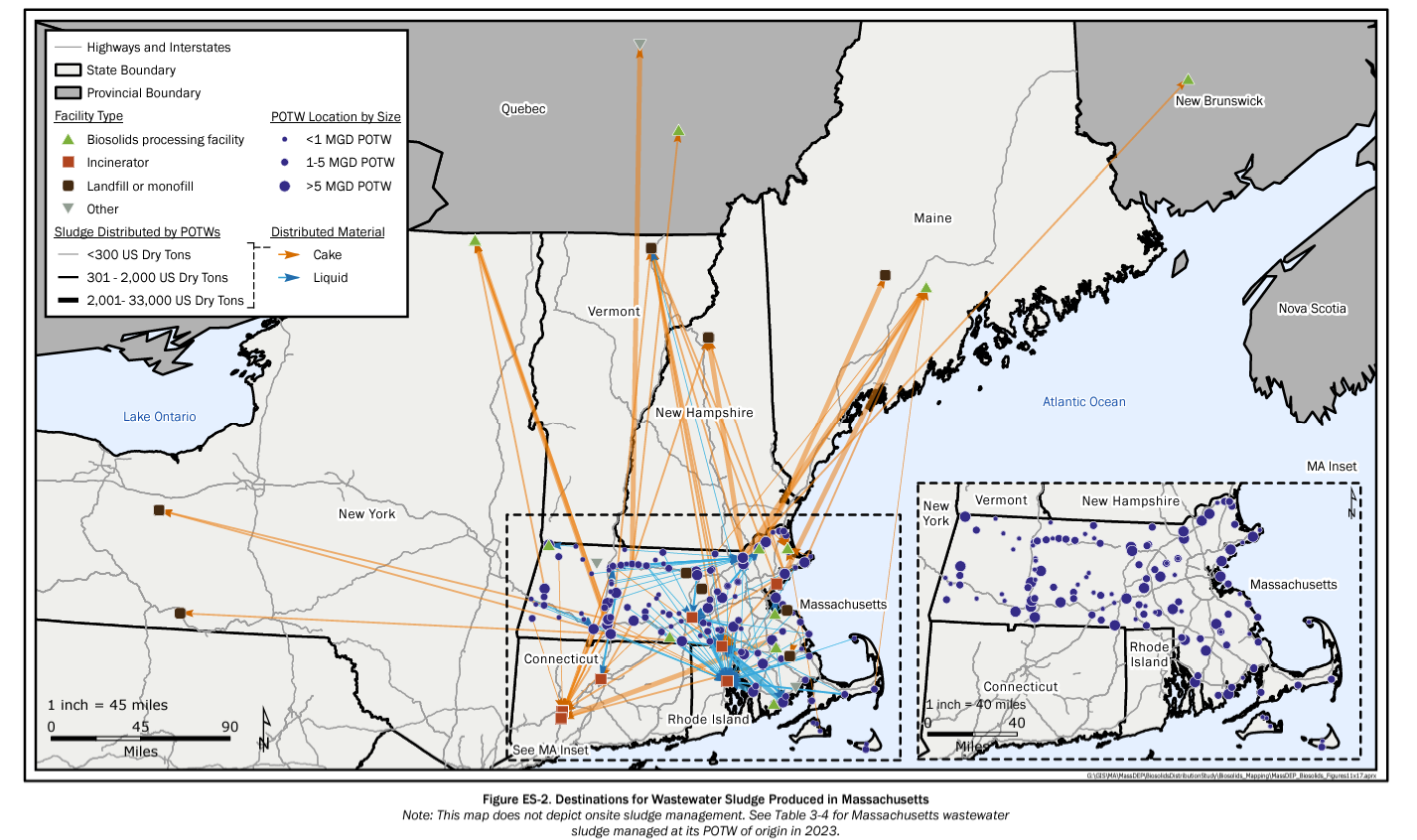MassDEP Releases Part 1 of Statewide Biosolids Study
The Massachusetts Department of Environmental Protection (MassDEP) has released Part 1 of its two-part study examining concerns related to the long-term future of wastewater sludge management in the Commonwealth. Part 1 of the study, prepared by Tighe & Bond and Brown & Caldwell, provides a detailed background of current biosolids handling capacity in Massachusetts and New England, as well as near-term projections for the disposal of biosolids over the next five years.

A map of current destinations for wastewater sludge in Massachusetts.
The report examines approaches to managing nearly 166,000 dry tons of wastewater sludge generated annually by 127 wastewater facilities in the Commonwealth. Our team received 94 survey responses from publicly owned treatment works (POTW), representing approximately 99% of the permitted wastewater flows in the Commonwealth.
Currently, wastewater sludge is processed in several ways, including biosolids land application, incineration, and landfill disposal. With the costs for sludge management projected to rise over the next five years, this report provides crucial background for POTWs looking to proactively manage their biosolids.
Part 1 of the study can be found on MassDEP’s website. The Tighe & Bond/Brown & Caldwell team is now working on Part 2 of the study, focusing on the impact of Per and Polyfluoroalkyl Substances (PFAS) on sludge management, developing recommendations for PFAS reduction technologies, contributions of PFAS into POTWs, and PFAS impacts on sludge management methods.
Part 1 included the following reports:
Technical Memorandum #1: current and near-term destinations of Massachusetts sludge
TM1 Report
Technical Memorandum #2: current and near-term destinations of Massachusetts septage
TM2 ReportTags: biosolids, Massachusetts, MassDEP, PFAS, residuals, solids disposal, solids handling


